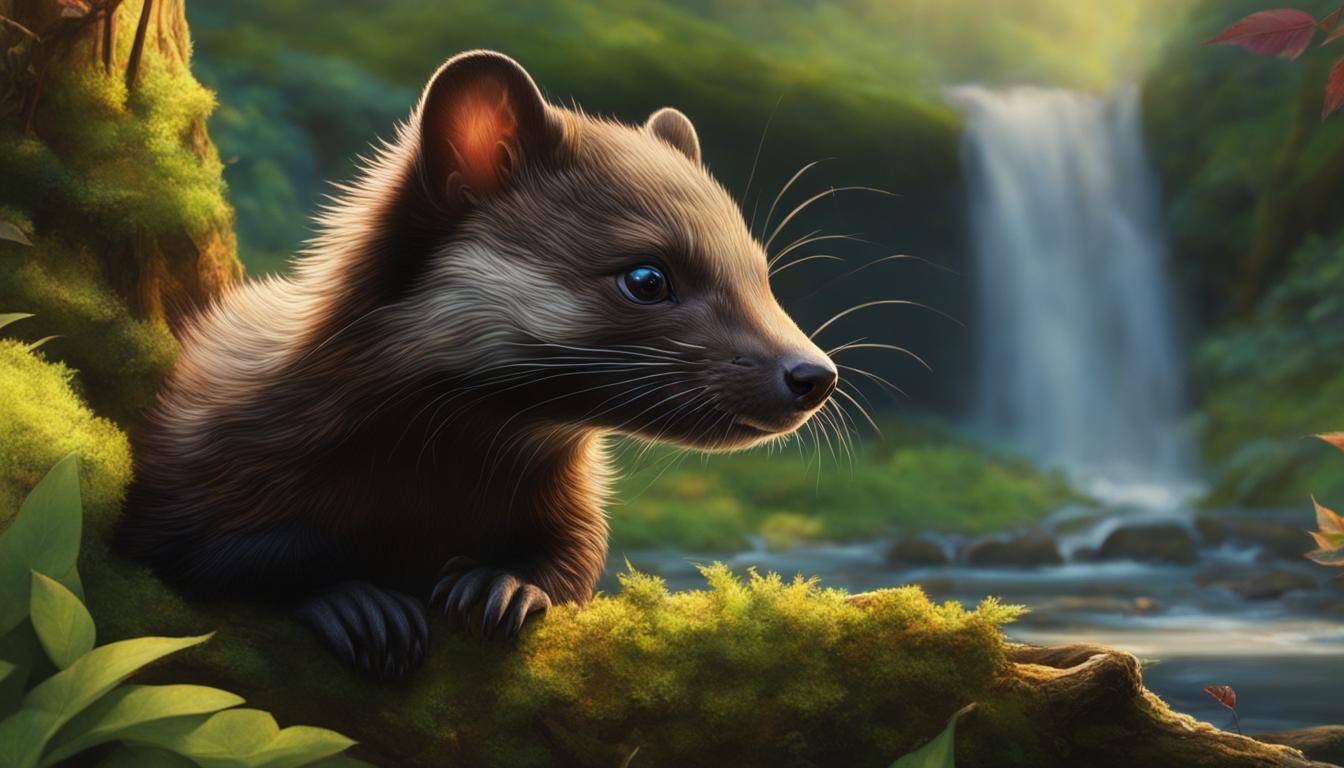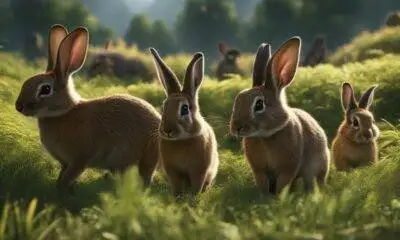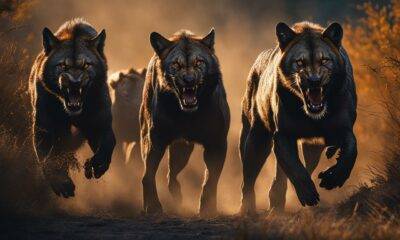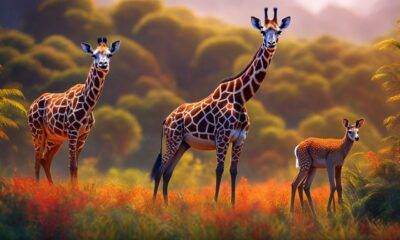Mustelids
Discovering the Fascinating World of Mustelids

Welcome to an exciting journey into the captivating world of mustelids! From their diverse species to their intriguing behaviors, these remarkable creatures have fascinated humans for centuries. Whether you are a wildlife enthusiast or simply curious about the wonders of nature, this article will provide you with a glimpse into the fascinating lives of mustelids.
Key Takeaways:
- Mustelids belong to the mustelidae family and include species like badgers, otters, ferrets, and wolverines.
- They have unique characteristics, behaviors, and adaptations that help them thrive in various habitats.
- Mustelids exhibit fascinating hunting techniques, such as climbing trees or pursuing small rodents with agility and intelligence.
- Their diet is diverse, ranging from insects and birds to specialized feeders like earthworms.
- Conservation efforts are crucial to protect mustelids from threats such as habitat loss, pollution, and hunting.
Mustelid Species and Their Adaptations
Mustelids are a diverse group of species, each with its own unique characteristics and adaptations that allow them to thrive in their respective habitats. Let’s take a closer look at some of the most fascinating mustelid species and their remarkable adaptations.
Badgers
One of the most well-known mustelid species is the badger. These stout and powerful creatures are known for their burrowing abilities and strong forelimbs, which they use to excavate complex underground dens. Their sharp claws enable them to dig through soil with ease, creating intricate tunnel systems where they find shelter and rear their young.
Otters
Otters are another fascinating species within the mustelid family. With their sleek bodies and webbed feet, otters are perfectly adapted for a life in water. They are agile swimmers and expert divers, capable of maneuvering through rivers, lakes, and coastlines with remarkable efficiency. Their partially-webbed feet and streamlined bodies allow them to navigate the water gracefully, while their dense fur keeps them warm and buoyant.
Ferrets
Ferrets are known for their curious and playful nature. These small mustelids have long, slender bodies that allow them to squeeze into tight spaces and navigate burrows in search of prey. Their flexible spine and highly muscled build make them agile hunters, capable of chasing small rodents with speed and precision. Ferrets are also known for their domestication, often kept as pets due to their sociable and inquisitive personalities.
These are just a few examples of the fascinating mustelid species and their unique adaptations. Each species has evolved to thrive in its specific habitat, showcasing the incredible diversity and adaptability of this family of carnivores. Exploring the characteristics and adaptations of mustelids opens up a world of wonder and appreciation for these remarkable creatures.
| Species | Characteristic | Adaptation |
|---|---|---|
| Badger | Burrowing | Powerful forelimbs and sharp claws |
| Otter | Swimming and diving | Streamlined body and webbed feet |
| Ferret | Hunting in burrows | Flexible spine and agile build |
Mustelid Behavior and Hunting Techniques
When it comes to behavior, mustelids are an intriguing group of creatures. They possess a wide range of hunting techniques that vary depending on their species and prey. For example, the pine marten, with its sharp claws, is adept at climbing trees and catching birds in mid-air. On the other hand, the ferret relies on its speed and agility to pursue small rodents. These hunting skills demonstrate the adaptability, intelligence, and agility of mustelids.
Mustelids also exhibit interesting behaviors beyond hunting. Scent marking is a common practice among many species, allowing them to communicate with other mustelids in their territory. This behavior helps establish boundaries and avoid conflict. Additionally, mustelids engage in social interactions within their own species, displaying playfulness and cooperation. These behaviors not only serve practical purposes but also add to the overall charm of these fascinating creatures.
Now, let’s dive into some fun facts about mustelids. Did you know that the European badger can excavate extensive underground burrows, known as setts, which can have multiple entrances and chambers? These setts serve as shelter and breeding grounds. Another interesting fact is that some species, like the otter, have a playful nature and can often be seen sliding down slopes or engaging in water-based activities. These fun facts highlight the diverse behaviors and unique characteristics of mustelids.
| Mustelid Species | Hunting Technique |
|---|---|
| Pine Marten | Sharp claws for climbing trees and catching birds |
| Ferret | Speed and agility to pursue small rodents |
| European Badger | Excavates extensive underground burrows for hunting and breeding |
| Otter | Playful nature involving sliding down slopes and water-based activities |
As we delve deeper into the world of mustelids, we gain a greater appreciation for their remarkable behavior and hunting techniques. From their unique adaptations to their playful nature, mustelids continue to captivate us with their fascinating behaviors.
Mustelid Diet and Conservation
Mustelids possess diverse dietary preferences, allowing them to adapt to a wide range of food resources. Their diets often include small rodents, birds, fish, amphibians, insects, fruits, and nuts. With their opportunistic feeding behavior, they can switch to different prey depending on availability. For example, river otters primarily consume fish but will also feed on small mammals or crustaceans when fish populations are limited.
The European badger, on the other hand, exhibits a specialized diet, with earthworms comprising the majority of its food intake. This adaptability in diet is crucial for mustelids to survive in various habitats and maintain a balanced ecosystem. By controlling the populations of certain prey species, mustelids play a vital role in promoting biodiversity and ecosystem health.
Unfortunately, many mustelid species face significant conservation challenges. Habitat loss due to urbanization, agricultural expansion, and deforestation poses a major threat to their populations. Pollution, such as water contamination from industrial activities, also affects mustelids’ habitats and food sources. Additionally, illegal hunting and trapping further deplete their numbers.
Conservation efforts must focus on protecting and restoring the habitats of mustelids, implementing sustainable land-use practices, and enforcing strict regulations against hunting and trapping. Public awareness and education play a crucial role in fostering a sense of responsibility and support for the conservation of these remarkable creatures. By preserving mustelid habitats and advocating for their protection, we can ensure the survival and well-being of these fascinating species for generations to come.
Table: Threats to Mustelid Species
| Threat | Description |
|---|---|
| Habitat Loss | Urbanization, agricultural expansion, and deforestation reduce suitable habitats for mustelids. |
| Pollution | Water contamination from industrial activities affects mustelids’ habitats and food sources. |
| Illegal Hunting and Trapping | Unregulated hunting and trapping practices lead to population decline. |
In conclusion, understanding the diverse diets of mustelids and the conservation challenges they face is crucial for their long-term survival. By taking proactive measures to protect their habitats and raise awareness about their importance in ecosystems, we can safeguard these remarkable creatures and ensure a harmonious coexistence with nature.
Conclusion
In conclusion, the fascinating world of mustelids introduces us to a diverse group of species with unique characteristics, behaviors, and adaptations. From the elusive pine marten to the playful otter, these mustelids contribute to the intricate web of ecosystems they inhabit.
By understanding their habitat, behavior, diet, and conservation status, we can better appreciate and protect these captivating creatures. Mustelids have a diverse diet that ranges from small rodents and birds to insects, fruit, and nuts. They are opportunistic feeders, capable of adapting their diet based on food availability.
However, many mustelid species face threats such as habitat loss, pollution, and hunting, making conservation efforts vital for their long-term survival. By safeguarding their habitats and raising awareness about the importance of these remarkable species, we can ensure the preservation of their beauty and wonder.
Mustelid Species List:
1. Badgers
2. Otters
3. Ferrets
4. Minks
5. Wolverines
6. Weasels
7. Pine martens
8. European badgers
9. American minks
10. Sea otters
11. Eurasian otters
12. Asian small-clawed otters
13. Black-footed ferrets
14. Stoats
15. Least weasels
16. Long-tailed weasels
17. Fisher
18. American marten
19. Wolverine
20. Tayan mink
21. Siberian weasel
22. Steppe polecat
23. European polecat
24. Stone marten
25. American marten
26. Japanese marten
27. Mountain weasel
28. Yellow-throated marten
29. Eurasian mink
30. Black-footed ferret
31. European mink
32. Marbled polecat
33. Flat-headed cat
34. Black cat
35. Brush-tailed mulloway
36. Malayan marten
37. Egyptian weasel
38. Egyptian polecat
39. Chinese ferret-badger
40. Indian brown mongoose
41. Collared mongoose
42. Crab-eating mongoose
43. Banded mongoose
44. Djungarian hamster
45. European hamster
46. Golden hamster
47. Roborovski hamster
48. Chinese hamster
49. Campbell’s dwarf hamster
50. Armenian hamster
FAQ
What is a mustelid?
Mustelids are small carnivorous mammals that belong to the mustelidae family. This family includes species such as badgers, otters, ferrets, minks, and wolverines.
What are some unique characteristics of mustelids?
Mustelids have various adaptations that enable them to thrive in their habitats. For example, badgers have powerful forelimbs for digging burrows, while otters have streamlined bodies and webbed feet for swimming and diving.
How do mustelids hunt?
Mustelids employ various hunting techniques depending on their species and prey. Some climb trees to catch birds, while others use speed and agility to pursue small rodents.
What do mustelids eat?
Mustelids have diverse diets, ranging from small rodents and birds to insects, fruit, and nuts. They are opportunistic feeders and can adapt their diet based on food availability.
Why is mustelid conservation important?
Many mustelid species are facing threats such as habitat loss, pollution, and hunting. Conservation efforts are crucial for ensuring their long-term survival and maintaining the balance of ecosystems.

All Animals
Mustelids Heart Warming Creatures

Mustelids are some of the most heartwarming creatures on the planet. Mustelidae contains 8 subfamilies and roughly 60 species including weasels, martens, otters, badgers and the wolverine. It is the largest family within the order Carnivora and is part of Musteloidea, a superfamily of weasels that also contains the red panda, raccoons and skunks. In this guide, we’ll explore each subfamily, where they’re located and the species found therein.
-

 cats7 months ago
cats7 months agoHow to Get Your Cats to Stop… Everything You Hate: Every No Needs a Yes!
-

 All Animals1 year ago
All Animals1 year agoALL about Lagomorphs Explained!
-

 All Animals10 months ago
All Animals10 months agoExplore the Wilderness: ALL about Carnivores Unleashed!
-

 Animals1 year ago
Animals1 year agoThe Wonders: ALL About Artiodactyls
-

 Cat Breeds6 months ago
Cat Breeds6 months agoWhat Are Some Rare Domestic Cat Breeds?
-

 Cat Breeds6 months ago
Cat Breeds6 months agoWhat Are the Top Family-Friendly Domestic Cat Breeds?
-

 Cat Breeds6 months ago
Cat Breeds6 months agoDiscover Rare Domestic Cat Breeds With Our Guide
-

 Cat Breeds6 months ago
Cat Breeds6 months agoTop Family-Friendly Domestic Cat Breeds


















